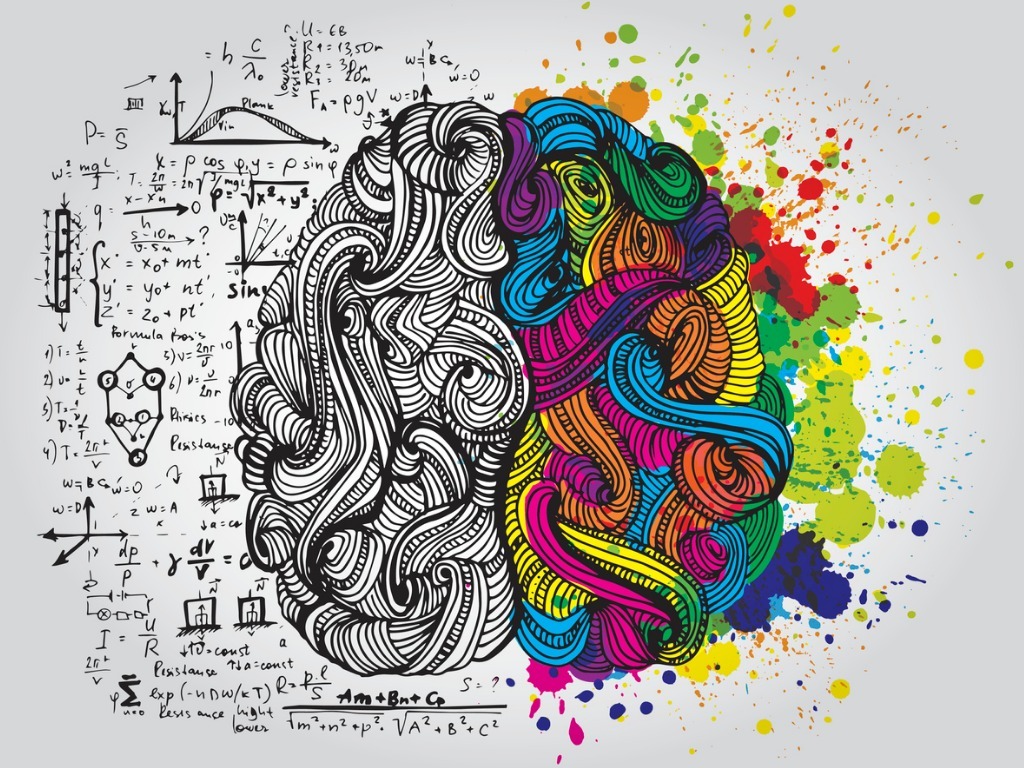
Design thinking is a problem-solving approach that provides richer data and helps uncover unarticulated needs explains Andrea Macarie
When we encounter a problem, we tend to jump straight to the solution. After all, we are EAs and creative problem solving is one of our many skills, isn’t it? Traditional strategy based on data and logical conclusions lead us to execute quickly, however most of the management schemes in organizations today were created in contexts that no longer exist. Disruptive megatrends force companies to rethink traditional approaches and be more human-centered and needs-driven. Business metrics cannot be abandoned, of course, but design thinking is a problem-solving approach that provides richer data and helps uncover unarticulated needs. These latent needs usually generate new opportunities.
We can’t solve problems by using the same kind of thinking we used when we created them
Albert Einstein
What is Design Thinking?
Design Thinking was defined as a process in 1969 by Herbert A. Simon, Noble Prize in Economics 1978 laureate, and popularized in the ‘90s by the David Kelley, founder of the design company IDEO and Stanford University’s Hasso Plattner Institute of Design (commonly known as the d.school).
There are examples of its use well before the second half of the 20th century, like Thomas Edison’s light bulb. When Edison invented the electric light bulb, he didn’t just think in terms of a single device; he conceived an entire marketplace (electric power generation and transmission), envisioning how people would use it and focusing on their needs. The device would not function in isolation from the ecosystem but within it and potentially transform it. Unlike his fellow inventors who were mainly narrowly specialized scientists, Edison is considered a broad generalist with great business acumen.
Originally, design thinking methodology was applied to the design of physical objects, then technological tools, and now it is used to solve complex challenges across a wide range of industries. It shifts the emphasis from quickly fixing problems we assume our customers and users might have, to uncovering their genuine problems. Design Thinking puts customers at the center of the experience and acknowledges they undergo changes; a constant feature in environments of volatility, uncertainty, complexity and ambiguity (VUCA).
Design thinking is not a linear and sequential process, but it is a powerful tool for EAs.
Let’s get familiar with four of the most well-known methodologies:
Methodology One: The IDEO Six Phase Process
Projects loop back through the different phases, as ideas are refined and new directions taken.
1. What are we trying to solve?
Identify the driving question that inspires the search for creative solutions. Be clear about the question before moving into the process.
2. Discover what people really need
Gather inspiration: This requires observation (without judging or drawing conclusions), interviewing (encouraging people to open up and share unfiltered information and therefore creating insightful conversations), and seeking to learn from extremes as their perspectives stretch our thinking and lead to bold new ideas. To help our stakeholders open up, treat people like research subjects (partners) instead of research objects. Use tools such as photo journals, group or expert interviews or secondary research.
3. Generate Ideas (Ideation)
Look beyond the obvious solutions for breakthrough ideas. Surfacing the insights, usually grounded in human needs and desires, leads to ideas that add value in people’s lives. Using journey maps, downloading the learnings gathered in the inspiration phase, bundling ideas into solutions, creating frameworks to highlight key relationships between the different data, mash-ups, storyboards, co-creation sessions and business model canvas are a few of the tools of the IDEO method.
4. Experimenting and Prototyping
Move from ideas to action. Expect to be experimenting and prototyping in this stage. A lot! Be ready to fail – a lot! It is not about making a full-fledged product or service, which is slow and expensive. Start small and cheap by launching a minimal viable product (MVP), that is a basic version, a skeleton of what you have in mind. Get it to your target audience to test and provide feedback, and then incorporate these insights in later stages. Building rough prototypes helps us learn to make ideas better. We have to keep iterating, potentially build partnerships to get the concept to market, a roadmap to keep us on time and target, ways to define success, measure and evaluate, and so on.
5. Test to Learn
Having obtained insights from real customers through phase, refine the ideas based on the feedback gathered. Remember, an MVP is a basic version and not a final product/service. This is the opportunity to see how our target audience interacts with our proposed solution to their needs.
6. Share the story
Last but certainly not least, we need a story to inspire others towards action. Storytelling and creating a pitch are of vital importance. With the idea well set, we want to reach of to our stakeholders (funders, partners, clients, everyone!). We want to capture and articulate the essence, offer context, show how the solution (product or service) is different and create the call to action.
Methodology Two: The d.school Five Stage Process

Photo credit: image courtesy of the Hasso Plattner Institute of Design at Stanford
1. Empathize
In order to understand the problem we are trying to solve, we need to observe, engage with the users, watch and listen. This stage requires fieldwork and to immerse ourselves in their environment. View users and their behaviors, notice a potential disconnect between what they say and they do, elicit stories from the people you talk to, ask “Why?” to uncover the deeper meaning.
2. Define
Put together the information gathered in the previous phase, analyze and cluster it in order to define the core problem; bring clarity and focus by making sense of the information; discover connections and patterns and ultimately define an actionable problem statement. The output of this stage is the POV (point of view), the expression of the problem we are trying to solve. Framing the right problem will help generate solutions to address it in the following stage.
3. Ideate
Come up with ideas, not just one but a broad range of possibilities. Get beyond the obvious solution and push for a wide range of ideas to select from. Ideation techniques like mind mapping, sketching, brainstorming, storyboards, co-creation workshops or the inverted process called “worst possible idea” help to spark innovative ideas.
4. Prototype
Create basic, quick and inexpensive versions. Though we may associate the word “prototype” with technology, it can be anything that the user may interact with, even a wall with post-its or a role-playing activity. This stage gives a sense of how the users would interact with the proposed solution. The key is to make it attractive enough to encourage them to use it, without spending too many resources and avoid getting emotionally attached to one particular prototype.
5. Test
This stage allows users to try out our prototypes that are based on the ideas we generated. Users’ feedback is a fantastic opportunity to learn about our solution and its utility. Some features might be accepted, while others re-examined or rejected.
Methodology Three: IBM’s Loop Method
IBM encourages teams to consider design thinking as an approach, rather than a process. They created the Loop model, which has a shared DNA with the agile methodology. The infinity symbolizes the continuous and constant loop of activity.

Photo credit: IBM, Ms. Joni Saylor – Design Principal
The teams:
1. Observe their users in action
They set aside their own assumptions and dive into the users’ world to see what others look past.
2. Reflect and synthesize what they have seen
Reflection is the birthplace of understanding, and synthesizing the learning helps articulate a point of view and come up with a plan.
3. Make a prototype of a better experience
This gives concrete form to abstract ideas, turning intent into reality.
The teams are expected to continuously move through the loop of observe, reflect and make.
Some of the tools used are stakeholder maps, hopes and fear charts, empathy maps, big idea vignettes, scenario maps, prioritization grid, needs statements, storyboard and experience-based roadmaps.
Methodology Four: The Darden School
Prof. Jeanne M. Liedtka explores the different stages of the process through four questions:

Photo credit: Darden School, Prof. Jeanne M. Liedtka
1. What is?
This refers to the current reality. The tools that can be helpful to assess the situation are:
- Journey mapping: see the existing experience through the customers’ eyes.
- Value chain analysis: assess current value chain that supports the customers’ journey.
- Mind mapping: generate insights from exploration activities and use them to create design criteria.
2. What if?
This is about possibilities, envisioning multiple options to create a new future, through:
- Brainstorming: think about new possibilities and alternative business models.
- Concept development: assemble innovative elements into a coherent solution that can be further explored and evaluated.
3. What wows?
Make choices about where to focus first, by:
- Assumption testing: isolate and test the key assumptions that will drive the success or failure of a concept.
- Rapid prototyping: express a new concept in a tangible form for further exploration, testing and refinement.
4. What works?
This is the time to test the prototypes on real users, by doing small experiments and engaging them by means of:
- Customer co-creation: invite stakeholders to participate in creating the solution that best meets their needs.
- Learning launch: create an affordable experiment that lets customers experience the new solution over a period of time, to test key assumptions with market data.
Why is Design Thinking useful (not just cool)?
The main learnings for me after researching this fascinating topic and doing some testing are:
- Users are the protagonists, the subjects (not the objects!) of the process. I believe it will be precisely this human-centered, needs-driven approach that will make the difference in the way we work, more so in the 4th industrial revolution where AI will help automate many of the routine tasks and processes. (If you’re interested in automation and EAs working with AI, you may find this other article relevant: The Game-Changing Assistant ).
- It helps discover latent needs, with an emotional component, which provides an incredibly rich data that is usually hard to capture by traditional market research. The insights gathered may reveal new data but, more importantly, they help us see things through new lenses and reframe the original problem based on the users’ deep needs.
- You can adjust the design thinking process to your needs; no matter how many steps you use, the purpose is to create a process that is replicable and applicable to multiple areas (and ideally scalable!) to help surface learnings from the customers and inform the decision-making process.
- It embraces diversity. Cross-functional, multidisciplinary teams with a skeptic on board are a great choice in the design thinking process, not just because of their diversity of knowledge but also because of confirmation bias – we tend to interpret information in a way that confirms our preexisting beliefs or hypotheses. Surround yourself with diverse people – they will have different biases! People who are different from one another co-create. However, the team should not settle for the common ground, which, according to the experts, is a typical case of satisficing – searching through the available alternatives until an acceptability threshold is met. The team should always look for optimizing as positive outcome of the process.
- It helps to get used to and be comfortable with open-ended problems, develop divergent and convergent thinking (expanding our minds at the beginning of each stage and then narrowing down the options as we transition to the next stage) and an agile mindset. In order to keep up with the changes and be up-to-date, reskilling and upskilling are vital. (If you’re interested in the future of the EA profession and career paths, you may find this other article relevant: Reskill, Upskill, Go!).
What are the uses of Design Thinking?
Some theories suggest that not every problem fits well with design thinking; that it works for people-centered problems with several stakeholders and a context of uncertainty and complexity.
Others think it can be applied in virtually any situation as it can be customized to the needs of the company, project, etc.
Here are some use cases of design thinking:
- Attracting and retaining millennial customers.
- improving the onboarding experience.
- streamlining process efficiency.
- corporate travel agency improvements of service to internal customers.
- implementation of a simple, user friendly and scalable purchase tool.
Companies that have successfully applied design thinking for different purposes, include:
Lego
Lego began to think more about the customer rather than product innovation by asking themselves what children’s needs were, and what was the role of play in their lives; instead of the toys they wanted. They observed, conducted interviews, created user diaries and empathy maps. These generated new sources of knowledge about children’s likes, dislikes, habits and helped Lego have a clearer picture of their needs.
Suncorp
Suncorp used design thinking for an internal challenge: a post-merger integration. Through multi-level engagement, they built alignment on the company strategy and vision, using the tool of storytelling.
Toyota
Toyota analyzed one if its contact centres, engaging cross-functional teams at different levels. They redesigned the centre to improve the experiences of both internal and external customers.
3M
3M applied design thinking tools like visualization and ethnographic research to rethink the sales process and help the sales team engage their customers in using new materials.
What skills needed in Design Thinking do EAs demonstrate?
At the beginning of the article, we talked about Edison and the fact that he envisioned a whole ecosystem rather than a new device. Like him, EAs are broad generalists with a business acumen that helps spot areas to improve. EAs often demonstrate symphonic thinking, the ability to see the whole picture, build connections and find effective solutions. They make the whole greater than the sum of its parts.
I encourage you to learn more about this problem solving approach, test it, record the learning, develop the mindset of prototyping when possible, practice divergent and convergent thinking and get comfortable with not having all the pieces of the puzzle but a happy customer who is the centre of your efforts.
Bibliography
IESE insight dossier “Transformation through design thinking”
IDEO website https://www.ideo.org/ & tool kit www.designkit.org/methods
d.school website & tool kit https://dschool.stanford.edu/resources/gear-up-how-to-kick-off-a-crash-course
IBM website & field guide https://bit.ly/2S31I2W
Prof. Jeanne M. Liedtka: https://jeanneliedtka.wordpress.com/design-thinking/
WIRED article “IBM’s got a plan to bring Design Thinking to big business”
HBR article “To come up with a good idea, start by imagining the worst idea possible”
Lego Foundation’s report “Re-Imagine Learning: High-Level reflections from an Ecosystem”













